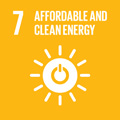- Docente: Eleonora Rivalta
- Credits: 6
- SSD: GEO/10
- Language: Italian
- Moduli: Eleonora Rivalta (Modulo 1) Antonio Costa (Modulo 2)
- Teaching Mode: In-person learning (entirely or partially) (Modulo 1); In-person learning (entirely or partially) (Modulo 2)
- Campus: Bologna
-
Corso:
Second cycle degree programme (LM) in
Physics of the Earth System (cod. 6696)
Also valid for Second cycle degree programme (LM) in Physics of the Earth System (cod. 8626)
-
from Oct 01, 2025 to Dec 18, 2025
-
from Oct 14, 2025 to Oct 24, 2025
Learning outcomes
By the end of the course, the student will know what causes volcanism, the physical properties of magmas and the physical principles underlying the modeling of magma ascent, storage and volcanic eruptions.
Course contents
MODULE 1 (Eleonora Rivalta)
Introduction to the physics of volcanoes. Phenomenology of volcanism: volcanism on Earth and in the Solar System, eruptions on Earth, energy of eruptions.
Thermodynamics of the Earth: heat, continental geotherms, convection, mantle geotherms. Generation and properties of magmas: formation, compositon and rheologies of magmas.
Magma ascent mechanisms: porous flow, hydraulic fracturing.
Magma chambers, deformations, seismicity, gravity changes. Caldera collapse. Interactions earthquakes-volcanoes.
MODULE 2 (Antonio Costa)
Magma ascent in conduits.
Volcanic phenomena -1: Lava flows and lava domes,
Volcanic phenomena -2: Eruptive columns and pyroclastic flows,
Atmospheric dispersion of volcanic ash and gases and impact on atmosphere and climate.
Generation and propagation of lahars (mudflows).
(It is assumed that the student has a good preliminary knowledge of the basic concepts of thermodynamics, fluid mechanics and theory of elasticity.)
Readings/Bibliography
- H. Sigurdsson (a cura di), Encyclopedia of Volcanoes, Academic Press, 2000.
- R. Lopes e T. Gregg, Volcanic Worlds, Springer, 2004.
- D. L. Turcotte e G. Schubert, Geodynamics, Cambridge University Press, 2002.
- Dobran F (2001) Volcanic Processes: Mechanisms In Material Transport. Kluwer, New York, pp 620
- Fagents S.A., K.P. T.K.P. Gregg, R.M. C. Lopes (Edtrs), Modeling Volcanic Processes, The Physics and Mathematics of Volcanism, Cambridge University Press, 2013.
- Gilbert JS, Sparks RSJ (eds) (1998) The Physics of Explosive Volcanism. Special Publication of the Geological Society of London, vol 145, pp 186
Assessment methods
The exam will be oral and will generally last about 30 minutes.
The student will be asked to illustrate typically three topics among those considered in the course. For each topic, the student will be first asked to expose the general framework, then to go into details on some specific aspects.
The student will be requested to know the main equations of the physical theories employed and to know how they are derived; to be able to apply them to specific cases; to know the orders of magnitude of the employed physical quantities.Office hours
See the website of Eleonora Rivalta
See the website of Antonio Costa
SDGs



This teaching activity contributes to the achievement of the Sustainable Development Goals of the UN 2030 Agenda.
